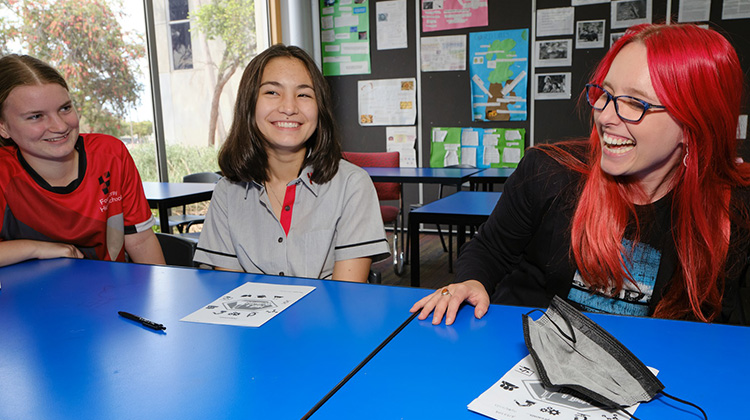Program Shows Students What STEM Really Looks Like

Dr Megan Sebben has had a varied career – from groundwater hydrology research to consulting. She currently manages CSIRO’s Kick-Start program which provides start-ups and small businesses with funding support and facilitates access to CSIRO’s research expertise and facilities.
“I never envisioned myself as a scientist,” said Megan, who had a lightbulb moment when her high school career advisor suggested that a science degree could give her a lot of flexibility to go into science or management.
As a young woman with a science PhD, Megan already breaks some lingering stereotypes.
“There are some incredible female scientists out there doing awesome work. We’re always saying you can’t be what you can’t see,” said Megan, who would’ve loved to have greater access to female STEM role models when she was at school.
Women in STEM is one part of a broader conversation about diversity in science and CSIRO’s STEM Professionals in Schools program is taking that message to students all over Australia.
“There are kids from a lot of different backgrounds getting huge exposure to science and technology through the program. Science is for everyone. I don’t want anybody to feel that it’s not for them, because it absolutely is,” Megan said.
Dr Sebben is one of over 1200 professionals currently participating in the STEM Professionals in Schools program, she gets students thinking about the purpose and application of STEM topics beyond the textbooks.
She recently shared her experiences with Year 9 and 10 students at Footscray High School’s ‘Meet a Scientist’ event. Students got to hear all about Megan’s career. Additionally, they also learned that science can provide the means to solve issues they are passionate about.
A family trip to New Zealand’s Franz Josef Glacier sparked Sebben’s interest in water and sustainability. However, it would be years before she would see the links between some classroom theories and real-world sustainable outcomes.
“I didn’t really understand why I was being told to study calculus,” she said. “Then, in my first hydrology lecture at university, I learned how these equations could tell me the shape of the water table underground. This in turn, enables us to work out how much of this can be used sustainably. So, I became really engaged with it,” Megan said.
She told the students, “your passion for the thing you care about comes first. Then science, tech and maths are simply sets of tools that help us do really incredible things for humanity and the planet.”
“Even though we may only spend half an hour talking to the class, for the kids to get exposure to people working on interesting things could be a life-changing experience. I think you can underestimate the contribution just a small amount of effort can make. And I think this program lends itself really well to that,” Megan said.
Volunteers can be as involved as they want to be. For instance, Megan arranges her involvement with the schools depending on the ebb and flow of her work life. Last year, she visited Footscray High School twice. She also held video calls with The King David School over the course of a month for an environmental sciences module.
The program provides STEM professionals the opportunity to get into the physical or virtual classroom and hone their presentation skills and they can be approached to help teachers to create exciting lessons for students. It all starts with reaching out to the CSIRO STEM Professionals in Schools team.